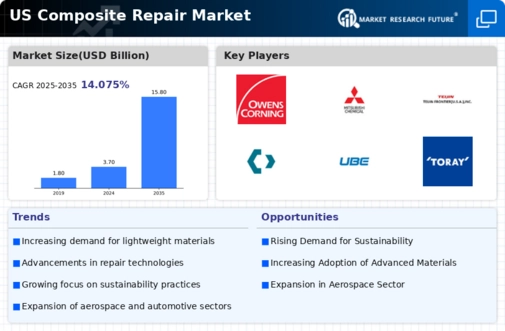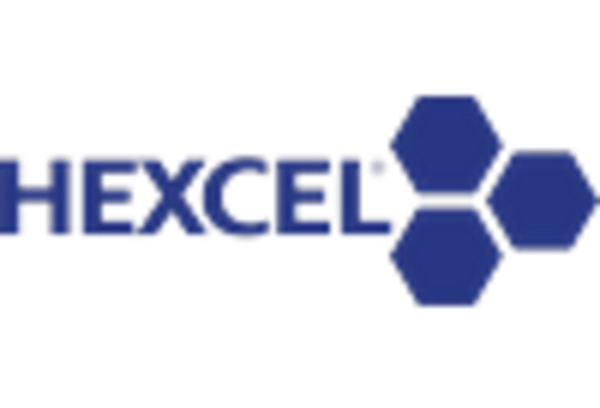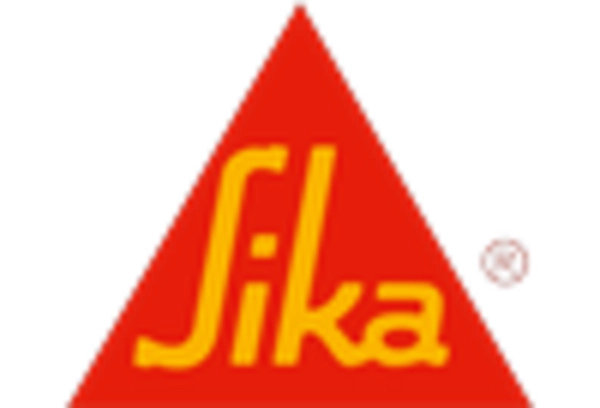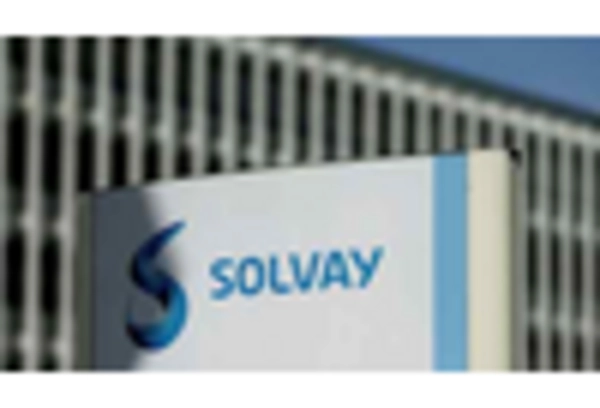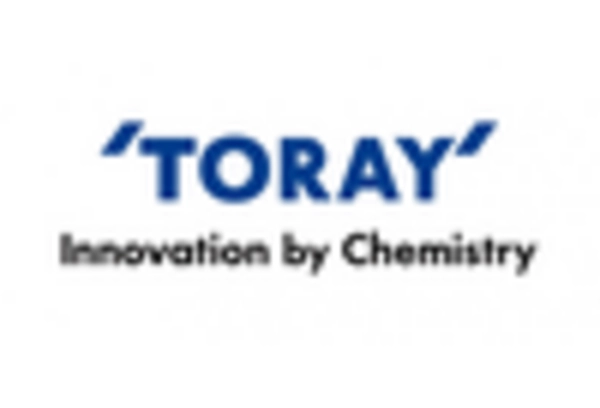The composite repair market is currently characterized by a dynamic competitive landscape, driven by technological advancements and increasing demand for lightweight materials across various industries. Key players such as Hexcel Corporation (US), Solvay SA (BE), and 3M Company (US) are strategically positioned to leverage innovation and sustainability in their operations. Hexcel Corporation (US) focuses on advanced composite materials, emphasizing research and development to enhance product performance. Meanwhile, Solvay SA (BE) is actively pursuing partnerships to expand its portfolio in sustainable composite solutions, indicating a shift towards eco-friendly practices. 3M Company (US) is also investing in digital transformation initiatives to optimize its manufacturing processes, thereby enhancing operational efficiency and responsiveness to market demands.The business tactics employed by these companies include localizing manufacturing and optimizing supply chains to reduce costs and improve service delivery. The market structure appears moderately fragmented, with several players competing for market share. However, the collective influence of major companies shapes the competitive environment, as they set benchmarks for innovation and sustainability that smaller firms may strive to emulate.
In October Hexcel Corporation (US) announced a strategic partnership with a leading aerospace manufacturer to develop next-generation composite materials aimed at reducing weight and improving fuel efficiency in aircraft. This collaboration is likely to enhance Hexcel's market position by aligning its innovative capabilities with the growing demand for sustainable aviation solutions. The partnership underscores the importance of collaboration in driving technological advancements within the sector.
In September Solvay SA (BE) launched a new line of bio-based composite materials designed for automotive applications. This initiative not only reflects Solvay's commitment to sustainability but also positions the company to capture a growing segment of the market that prioritizes environmentally friendly materials. The introduction of these products may provide Solvay with a competitive edge as manufacturers increasingly seek to meet regulatory requirements and consumer preferences for sustainable options.
In August 3M Company (US) unveiled a digital platform aimed at enhancing the repair and maintenance processes for composite materials. This platform integrates AI and machine learning to provide real-time data analytics, enabling customers to optimize their repair strategies. The launch of this platform signifies 3M's commitment to digitalization, which is becoming a critical factor in maintaining competitive advantage in the composite repair market.
As of November current trends in the composite repair market indicate a strong emphasis on digitalization, sustainability, and the integration of advanced technologies such as AI. Strategic alliances are increasingly shaping the competitive landscape, as companies recognize the value of collaboration in driving innovation. Looking ahead, it appears that competitive differentiation will evolve from traditional price-based competition to a focus on technological innovation, supply chain reliability, and sustainable practices, reflecting the changing priorities of consumers and regulatory bodies.


